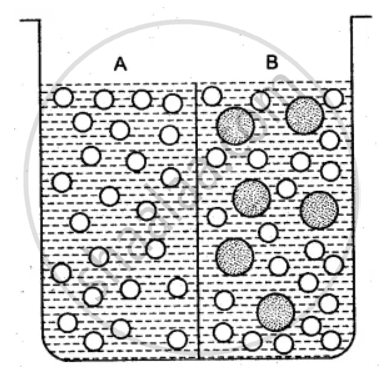Advertisements
Advertisements
प्रश्न
Answer the following question.
Define and or explain the term:
Plasmolysis
उत्तर १
उत्तर २
- When a living cell is placed in a hypertonic solution, exo-osmosis occurs. This is called plasmolysis.
- During plasmolysis, the protoplast of the cell shrinks and recedes from the cell wall due to which cell becomes flaccid. Such a cell is called a plasmolysed cell.
- In a plasmolyzed cell, a gap is developed between the cell wall and the protoplast. This gap is filled up by the outer solution.
संबंधित प्रश्न
What is responsible for guttation?
Explain why:
Bacteria and fungi do not grow in pickles, jams, jellies and squashes.
Explain why:
The leaves of wilted lettuce, if kept in cold water, become crisp.
Choose the correct answer:
Osmosis involves diffusion of ___________
What do you mean by transpiration pull ?
What is the water potential?
Give Reasons for the following.
The raisins swell up in the water.
Give a diagrammatic representation of plasmolysis in a cell.
The diagram given below is of an experiment just at the start. Study the diagram carefully and answer the following questions :
(i) What does the experiment demonstrate?
(ii) Define, the process demonstrated in the experiment.
(iii) What changes are observed after a few hours?
(iv) Give two examples of a semi-permeable membrane.
(v) Which limb of the U-tube contains a more concentrated sucrose solution, A or B?
(vi) Why is the membrane separating the two solutions labeled as semi-permeable membrane?
A plant cell kept in a drop of water was examined under the low power magnification of a microscope, as shown:
(i) What would you do to bring this cell back to its original condition?
(ii) What scientific term is used for such condition?
(iii) Draw the same cell if it is kept in a strong sugar solution.
The diagram below represents an experimental set up to demonstrate a vital process. Study the same and then answer the questions that follow:
(i) Name the process.
(ii) Define the above named process.
(iii) What would you observe in the experimental setup after an hour or so?
(iv) What control experiment can be set up for the above experiment?
(v) Keeping in mind the root hair cell and its surrounding name the part that corresponds to (1) Concentrated sugar solution, (2) Parchment paper, (3) Water in the beaker.
(vi) Name any other substance that can be used instead of parchment paper in the above experiment.
(vii) Mention two advantages of this process to the plant.
In an experiment, two sets of apparatus were set up as shown below:
In A there is a concentrated sugar solution inside the thistle funnel and red ink in the water outside the funnel. In B there is a concentrated glucose solution with red ink inside the thistle funnel and water outside the thistle funnel.
In both A and B the level of liquid inside the funnels rises up the tubes. In A the sugar solution turns red and in B, the water turns red.
Study the given observations and answer these questions:

- Name the process by which red ink moves in A and B.
- Which type of pressure forces the water molecules to move towards thistle funnels and cause a rise in the water level?
- Where does this process occur in plants and animals?
- What material could be used as a semi-permeable membrane?
The beaker is divided into two chambers A and B. The big circle represents solute and the small circles solvent.
(i) What can you say about the size of the holes in the membrane, if it is to behave semi- permeably between these two?
(ii) Will the solvent molecules pass through the membrane from left to right, from right to left, in either direction or in both directions?
(iii) In which direction will there be a net movement of solvent molecules?
Give Technical Term for the following.
A solution whose concentration is equal to the cell sap.
Give Technical Term for the following.
The pressure which is responsible for the movement of water molecules across the cortical cells of the root.
Name the following:
Condition of cell in which the cell content are shrunken.
Mention, if the following statement is True or False. If false rewrite the wrong statement in its correct form:
Plasmolysis makes the cell turgid.
Explain the Term: Osmosis
Define the following term:
Tonicity
